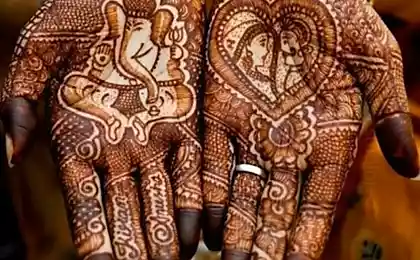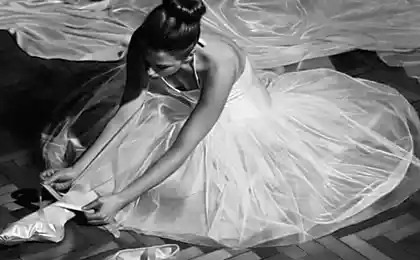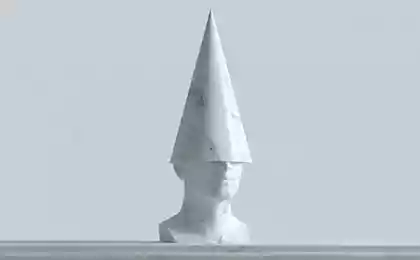824
High technology in the Vedas
The Vedas are ancient Indian treatises created over the many centuries before our era. But it contains knowledge, to the level which modern science has risen recently, or even while they are never reached. What can we learn from the Vedas that have come down to us from time immemorial?
After the creation of the Universe
The word veda translates from Sanskrit as "knowledge", "wisdom" (compare with the Russian "to know" — to know). The Vedas are considered to be one of the most ancient texts in the world, the earliest monument of culture on our planet.
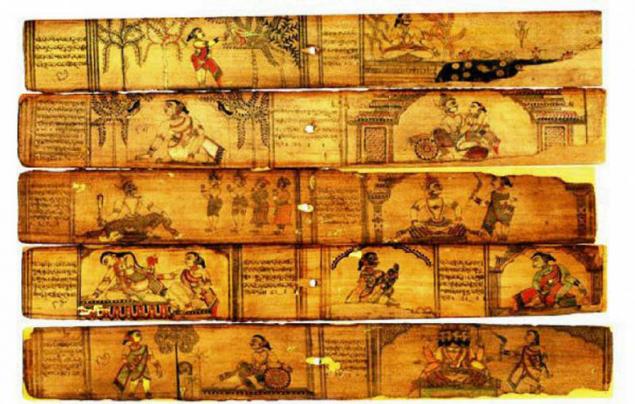
Indian researchers believe that they were created approximately 6,000 years before our era, the European science refer them to later times. In Hinduism, it is believed that the Vedas are eternal, appeared immediately after the creation of the Universe and dictated to them directly by the gods.
The Vedas describe many branches of scientific knowledge: for example, medicine — Ayurveda, weapons — Astra-sastra, architecture — Sthapatya-Veda, etc., There are also the so-called vedanga — supporting disciplines that include phonetics, metrics, grammar, etymology and astronomy.
The Vedas talk in detail about many things, and researchers around the world still find them in a variety of unexpected ancient times information about the world and man.
Great mathematicians
Curiously, the secret knowledge of the Vedas and caused surprise and interest, even among Soviet scientists, which was alien to mysticism of all kinds. The famous Indologist, academician Grigory Maksimovich Bongard-Levin in co-authorship with Grigory Fyodorovich Ilyin in 1985 he published the book "India in ancient times," which explored the many wonderful facts about science in the Vedas, such as algebra and astronomy.
In particular, in Vedanga-Swati appreciated the role of mathematics (ganita) in a number of other Sciences: "How the comb on the head of a peacock, like the gem, crowning a snake, and ganita is on top of the Sciences known in Vedanga".

Known in the Vedas and algebra — "avyakta-ganita" ("the art of calculating with unknown quantities"), and geometrical transformation of the square into a rectangle with a given party.
Described in the Vedas and arithmetic and geometric progressions, for example, are mentioned in Panavila-Brahman and Satapatha-Brahman.
It is curious that the famous Pythagorean theorem was also known in the earliest Vedas.
But modern scholars claim that in the Vedas there is information about infinity, and about the binary number system and of caching technology (storing data in a designated area for quick access to it in the future) data, which is used in the search algorithms.
Astronomers from the banks of the Ganges
About the level of astronomical knowledge of the ancient Indians can be judged by the numerous references in the Vedas. For example, religious ceremonies were tied to the phases of the moon and its position on the Ecliptic.
The Vedic Indians, in addition to the Sun and the moon, knew all five visible planets to the naked eye, they were able to navigate in the night sky, connecting the stars into constellations (nakshatras).
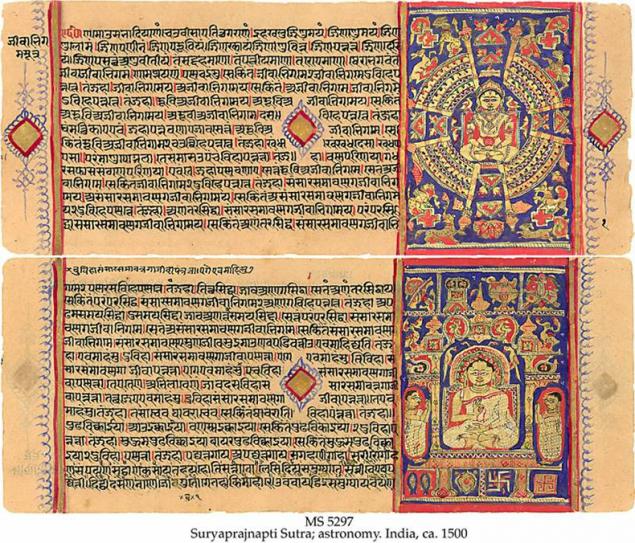
A complete list of them is given in the Black Yajurveda, and Atharvaveda, and the names remained almost unchanged for many centuries. An ancient Indian system of nakshatras correspond to those that are in all modern star catalogues.
In addition, the rig-Veda was used to calculate the speed of light with extreme precision. Here is the text from the rig Veda: "With deep reverence worship the sun, which covers the distance in 2002 Yojana for half nimesi".
Yojana is a measure of length, nimisha is a unit of time. If you translate Yojana and nemesi in the calculus, we obtain the speed of light is 300,000 kilometers per second.
Space knowledge
Moreover, in the Vedas there is a speech about space travel and a variety of aircraft (Vimana), which successfully overcome the earth's gravity.
For example, in the rig Veda tells about the marvelous chariot: "Born without horses, without reins, worthy of praise three-wheeled chariot around the space." "Faster thinking the chariot bird in the sky, rising to the Sun and the moon and falling to the Ground with a loud roar..."
Flying fortress

If you believe the ancient texts, the chariot ran three of the pilot, and she could sit on the ground and on the water.
Even in the Vedas shall indicate the technical characteristics of the chariot — it was made from several types of metal and worked on liquids, called Madhu, race and Anna. Indian scientist and a Sanskrit scholar Kumar Kanjilal, author of the book "Vimana in Ancient India", argues that race is mercury, Madhu — alcohol made from honey or fruit juice, Anne — the alcohol of rice or vegetable oil.
It is appropriate to recall the ancient Indian manuscript "samarangana Sutradhara", which is also talking about the mysterious chariot, flying on mercury:
"Strong and durable must the body, made of light material, like a great flying bird. Inside the device should be placed with the mercury and iron-heating device underneath. Through the power that lurks in the mercury which sets in motion carrying the vortex, a person inside this chariot, can fly long distances across the sky in the most amazing way... the Chariot develops the power of thunder through the mercury. And she immediately turns into a pearl in the sky."
If you believe the Vedas, chariots from the gods were of different sizes, including huge. Here's how to describe a huge flying chariot: "Houses and trees were shaking, and small plants uprooted terrifying wind caves in the mountains were filled with the roar and the sky seemed to split into pieces or fall from the huge speed and the mighty roar of the air crew..."
The temples in India that copy the appearance Wiman
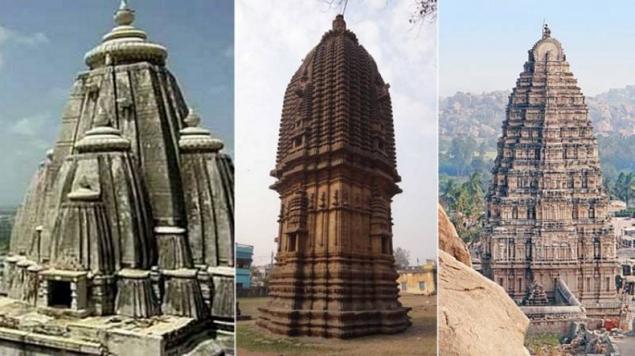
Medicine at the highest level
But not only the space referred to in the Vedas, they say a lot about the man, his health and biology in General. For example, Grapha Upanishad here tells of intrauterine life of the child:
"Embryo lying in the womb day and night, is a kind of mixture (like porridge) elements; after seven days it becomes a bubble; after two weeks he becomes a clot and after a month, it hardens. Two months later, begins to develop the head; in three months the feet; four, belly and buttocks; five — dorsal ridge; six to the nose, eyes and ears; in seven, the embryo begins to rapidly develop its vital functions, and eight — he's almost ready little man".
It is worth noting that European science has reached such knowledge in embryology only centuries later — for example, the Dutch physician Regnier de Graaf, discovered the follicles of the ovary only in 1672.
There, in Graphe-Upanishad, refers to the structure of the heart: "The heart 101 of a blood vessel, each of them has 100 more vessels, each having 72 of them thousands of branches".
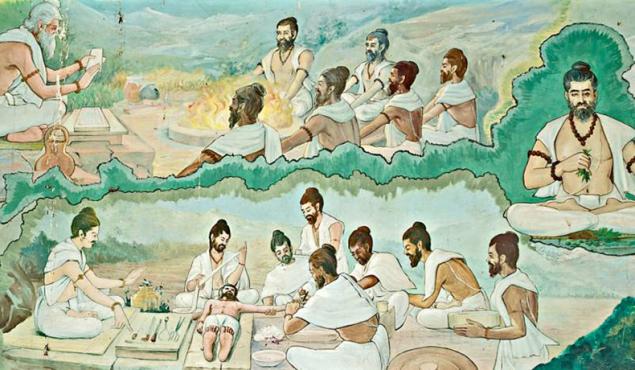
And it is not only an amazing knowledge of the ancient books. A combination of male and female chromosomes in the zygote was discovered in the twentieth century, but are mentioned in the Vedas, particularly in the Bhagavata Purana. It also describes the structure and the structure of cells, and microorganisms, the existence of which modern science was revealed only in the XVIII century.
In the rig Veda there is a text addressed to the ashwins — it is a question of prosthetics and General progress of medicine in ancient times.
And you did on hard, so
What the grieving singer was again good to see.
As the leg was cut off, like the wing of a bird,
You immediately put Vishpala the Iron leg, so she raced to the reward.
And it says still unavailable for our medical process — a complete rejuvenation of the body:
... the aged cover of the body You took Cyavana, like clothes.
You have extended the life of abandoned, amazing.
And even made him the husband of the young wives. Another interesting moment. Vedas translated in the past century, ideas about science and technology of the time. It is not excluded that new translations of ancient texts will reveal a completely new knowledge, which has not yet reached the modern science. published
Author: Natalia Trubinsky
P. S. And remember, only by changing their consumption — together we change the world! ©
Join us in Facebook , Vkontakte, Odnoklassniki
Source: paranormal-news.ru/news/vysokie_tekhnologii_v_vedakh/2015-12-31-11715
After the creation of the Universe
The word veda translates from Sanskrit as "knowledge", "wisdom" (compare with the Russian "to know" — to know). The Vedas are considered to be one of the most ancient texts in the world, the earliest monument of culture on our planet.

Indian researchers believe that they were created approximately 6,000 years before our era, the European science refer them to later times. In Hinduism, it is believed that the Vedas are eternal, appeared immediately after the creation of the Universe and dictated to them directly by the gods.
The Vedas describe many branches of scientific knowledge: for example, medicine — Ayurveda, weapons — Astra-sastra, architecture — Sthapatya-Veda, etc., There are also the so-called vedanga — supporting disciplines that include phonetics, metrics, grammar, etymology and astronomy.
The Vedas talk in detail about many things, and researchers around the world still find them in a variety of unexpected ancient times information about the world and man.
Great mathematicians
Curiously, the secret knowledge of the Vedas and caused surprise and interest, even among Soviet scientists, which was alien to mysticism of all kinds. The famous Indologist, academician Grigory Maksimovich Bongard-Levin in co-authorship with Grigory Fyodorovich Ilyin in 1985 he published the book "India in ancient times," which explored the many wonderful facts about science in the Vedas, such as algebra and astronomy.
In particular, in Vedanga-Swati appreciated the role of mathematics (ganita) in a number of other Sciences: "How the comb on the head of a peacock, like the gem, crowning a snake, and ganita is on top of the Sciences known in Vedanga".

Known in the Vedas and algebra — "avyakta-ganita" ("the art of calculating with unknown quantities"), and geometrical transformation of the square into a rectangle with a given party.
Described in the Vedas and arithmetic and geometric progressions, for example, are mentioned in Panavila-Brahman and Satapatha-Brahman.
It is curious that the famous Pythagorean theorem was also known in the earliest Vedas.
But modern scholars claim that in the Vedas there is information about infinity, and about the binary number system and of caching technology (storing data in a designated area for quick access to it in the future) data, which is used in the search algorithms.
Astronomers from the banks of the Ganges
About the level of astronomical knowledge of the ancient Indians can be judged by the numerous references in the Vedas. For example, religious ceremonies were tied to the phases of the moon and its position on the Ecliptic.
The Vedic Indians, in addition to the Sun and the moon, knew all five visible planets to the naked eye, they were able to navigate in the night sky, connecting the stars into constellations (nakshatras).

A complete list of them is given in the Black Yajurveda, and Atharvaveda, and the names remained almost unchanged for many centuries. An ancient Indian system of nakshatras correspond to those that are in all modern star catalogues.
In addition, the rig-Veda was used to calculate the speed of light with extreme precision. Here is the text from the rig Veda: "With deep reverence worship the sun, which covers the distance in 2002 Yojana for half nimesi".
Yojana is a measure of length, nimisha is a unit of time. If you translate Yojana and nemesi in the calculus, we obtain the speed of light is 300,000 kilometers per second.
Space knowledge
Moreover, in the Vedas there is a speech about space travel and a variety of aircraft (Vimana), which successfully overcome the earth's gravity.
For example, in the rig Veda tells about the marvelous chariot: "Born without horses, without reins, worthy of praise three-wheeled chariot around the space." "Faster thinking the chariot bird in the sky, rising to the Sun and the moon and falling to the Ground with a loud roar..."
Flying fortress

If you believe the ancient texts, the chariot ran three of the pilot, and she could sit on the ground and on the water.
Even in the Vedas shall indicate the technical characteristics of the chariot — it was made from several types of metal and worked on liquids, called Madhu, race and Anna. Indian scientist and a Sanskrit scholar Kumar Kanjilal, author of the book "Vimana in Ancient India", argues that race is mercury, Madhu — alcohol made from honey or fruit juice, Anne — the alcohol of rice or vegetable oil.
It is appropriate to recall the ancient Indian manuscript "samarangana Sutradhara", which is also talking about the mysterious chariot, flying on mercury:
"Strong and durable must the body, made of light material, like a great flying bird. Inside the device should be placed with the mercury and iron-heating device underneath. Through the power that lurks in the mercury which sets in motion carrying the vortex, a person inside this chariot, can fly long distances across the sky in the most amazing way... the Chariot develops the power of thunder through the mercury. And she immediately turns into a pearl in the sky."
If you believe the Vedas, chariots from the gods were of different sizes, including huge. Here's how to describe a huge flying chariot: "Houses and trees were shaking, and small plants uprooted terrifying wind caves in the mountains were filled with the roar and the sky seemed to split into pieces or fall from the huge speed and the mighty roar of the air crew..."
The temples in India that copy the appearance Wiman

Medicine at the highest level
But not only the space referred to in the Vedas, they say a lot about the man, his health and biology in General. For example, Grapha Upanishad here tells of intrauterine life of the child:
"Embryo lying in the womb day and night, is a kind of mixture (like porridge) elements; after seven days it becomes a bubble; after two weeks he becomes a clot and after a month, it hardens. Two months later, begins to develop the head; in three months the feet; four, belly and buttocks; five — dorsal ridge; six to the nose, eyes and ears; in seven, the embryo begins to rapidly develop its vital functions, and eight — he's almost ready little man".
It is worth noting that European science has reached such knowledge in embryology only centuries later — for example, the Dutch physician Regnier de Graaf, discovered the follicles of the ovary only in 1672.
There, in Graphe-Upanishad, refers to the structure of the heart: "The heart 101 of a blood vessel, each of them has 100 more vessels, each having 72 of them thousands of branches".

And it is not only an amazing knowledge of the ancient books. A combination of male and female chromosomes in the zygote was discovered in the twentieth century, but are mentioned in the Vedas, particularly in the Bhagavata Purana. It also describes the structure and the structure of cells, and microorganisms, the existence of which modern science was revealed only in the XVIII century.
In the rig Veda there is a text addressed to the ashwins — it is a question of prosthetics and General progress of medicine in ancient times.
And you did on hard, so
What the grieving singer was again good to see.
As the leg was cut off, like the wing of a bird,
You immediately put Vishpala the Iron leg, so she raced to the reward.
And it says still unavailable for our medical process — a complete rejuvenation of the body:
... the aged cover of the body You took Cyavana, like clothes.
You have extended the life of abandoned, amazing.
And even made him the husband of the young wives. Another interesting moment. Vedas translated in the past century, ideas about science and technology of the time. It is not excluded that new translations of ancient texts will reveal a completely new knowledge, which has not yet reached the modern science. published
Author: Natalia Trubinsky
P. S. And remember, only by changing their consumption — together we change the world! ©
Join us in Facebook , Vkontakte, Odnoklassniki
Source: paranormal-news.ru/news/vysokie_tekhnologii_v_vedakh/2015-12-31-11715
